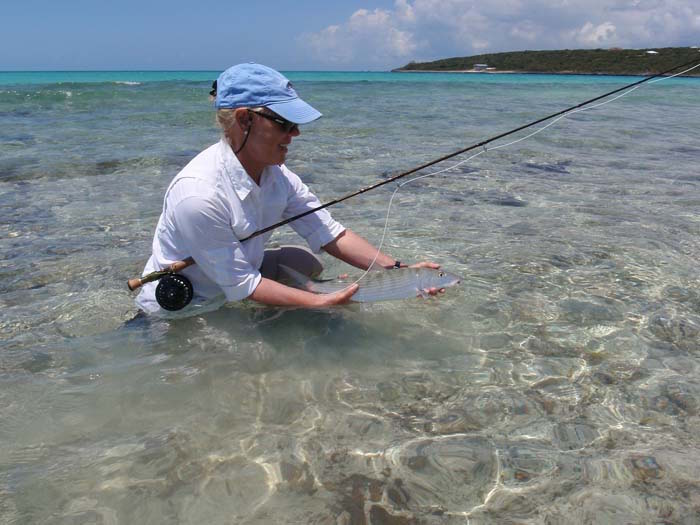
Lady angler with a Bahamas bonefish – a public domain image. More and more fish catch images are appearing on Instagram, and more and more followers are being introduced to fly fishing.
So, how does social media fit into fly fishing; effectually? But first, a word about Big Brother
By Skip Clement
[dropcap]S[/dropcap]ocial media is awash in scandals; data mining against your wishes, helping tip a presidential election by accepting Russian misinformation ads, and the revelation that social media knows more about you than your significant other, mom, or the IRS.
Worldwide, books, talk show hosts, and articles by the landfill full are advising get out of Facebook/Twitter/Google… ASAP, the building is on fire (Hands off my data! 15 default privacy settings you should change right now).
Your Facebook page info is worth $82 – do the math
Political parties and self-righteous politicians, here and abroad, are feasting on investigative commissions, committees, and basking in TV coverage enabling them to boast of their “uber” concern for protecting our privacy.
Yet quietly, Instagram, utterly unaware of its impact is fostering fly fishing – a reality featured in a story in the NYTimes:
“ . . . Social media has become the newest place for anglers to document every whopper, track the finest fishing holes and meet like-minded pals who swap secrets about everything from the best bait and lures to the most picturesque seaside villages.
Recreational fishing is on the rise in United States: The Fish and Wildlife Service reported last year that the number of anglers had grown eight percent, to 35.8 million in 2016 from 33.1 million in 2011.
One of those new to the sport is Noelle Coley, 26, the manager of a medical marijuana dispensary who lives in Wheat Ridge, Colo. She said she took up fishing a few years ago after an ex-boyfriend gave her a rod and reel.
Ms. Coley shares her catches on Instagram, but she guards her prized fishing holes from snoops, fearing her favorite streams will become crowded with newcomers. “I change the angle when taking a photograph,” she said of her popular Instagram posts. “I’m mindful not to tag rivers.”
With 21,500 Instagram followers, she has attracted the attention of more than just curious lookyloos. Three months ago, she said she signed a contract with a sponsor, Hardy, a maker of fly fishing rods and reels based in Alnwick, England. The company gives her free equipment in exchange for mentions on her social media account . . .
. . . Instagram has also been a boon for fishing-adjacent businesses. Daniel Giunta, the owner of Double D Charters in Montauk, N.Y., credits social media for the growth in his sports fishing charters. He struck a deal with Mustad, a maker of hooks that found him online. (The company gives him new products to test and hooks to give away.) He, too, has become an expert shutterbug, taking photographs of charter passengers and (with permission) tagging them online.
‘Within two hours of hitting the docks I’ll get five or 10 new followers,’ Mr. Giunta said with a laugh. ‘Being a captain these days is all about being a good photographer. I know where the light is. I know where they need to stand.’
Quotes by Laura M. Holson / NYTimes / April 12, 2018

